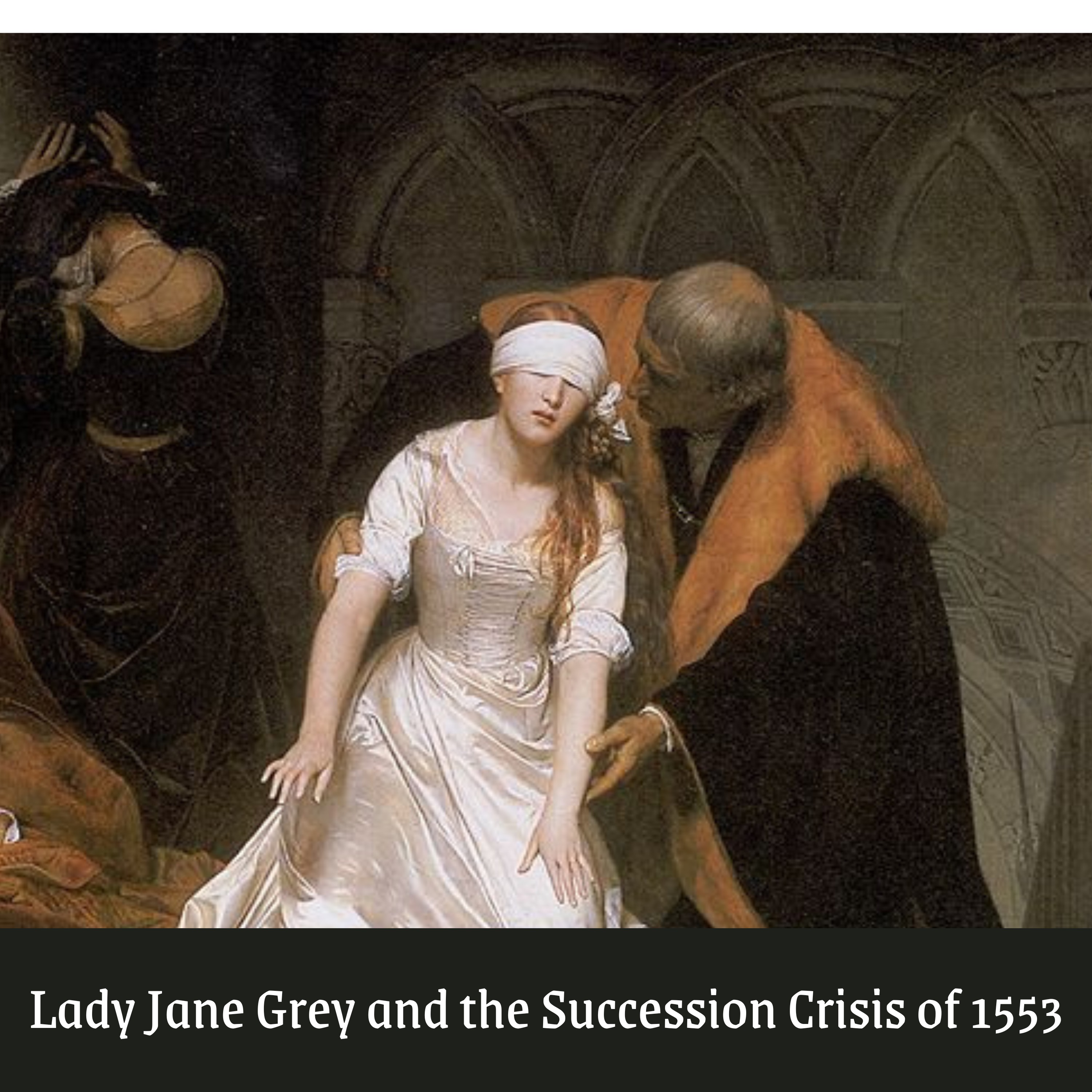
Supplemental: Lady Jane Grey and the Succession Crisis Part 1

Renaissance English History Podcast: A Show About the Tudors
Deep Dive
Why was the succession crisis of 1553 so significant for England?
The succession crisis of 1553 was significant because it threatened the stability of the Tudor dynasty and the religious reforms of Edward VI's reign. With Edward's impending death at age 15 and no direct male heirs, the question of succession became pivotal. The crisis had the potential to undo Protestant reforms and create a power vacuum, risking civil unrest or foreign intervention.
What were the symptoms of Edward VI's illness in 1553?
Edward VI exhibited symptoms of tuberculosis, including a persistent cough, fever, and significant weight loss. Despite his youth, his condition worsened rapidly, and contemporary physicians were unable to provide effective treatment.
Why did Edward VI alter the line of succession to exclude his half-sisters?
Edward VI altered the line of succession to exclude his half-sisters, Mary and Elizabeth, because he feared Mary, a staunch Catholic, would reverse the Protestant reforms of his reign. He believed it was his sovereign right to protect the realm from Catholicism and ensure the continuation of Protestantism.
What was the Device for the Succession, and why was it controversial?
The Device for the Succession was Edward VI's plan to bypass his half-sisters and name Lady Jane Grey as his heir. It was controversial because it directly contradicted the Third Succession Act of 1543, which reinstated Mary and Elizabeth to the line of succession. Edward's attempt to override parliamentary law without consent created legal ambiguity and uncertainty.
How did the Duke of Northumberland influence the succession crisis?
The Duke of Northumberland, John Dudley, played a pivotal role by aligning himself with Edward VI's Protestant convictions and influencing the king's decisions. He orchestrated the marriage of his son, Guilford Dudley, to Lady Jane Grey, positioning his family at the heart of the succession. Northumberland also secured key government positions for his supporters and framed the succession plan as a moral imperative to preserve Protestantism.
What were the legal challenges to Edward VI's Device for the Succession?
The Device for the Succession faced legal challenges because it bypassed the Third Succession Act of 1543, which had reinstated Mary and Elizabeth to the line of succession. Edward's attempt to alter the succession without parliamentary approval was seen as an overreach of royal prerogative, creating doubts about its legitimacy and risking civil unrest.
Why did Edward VI name Lady Jane Grey as his heir despite her being female?
Edward VI named Lady Jane Grey as his heir because she was a Protestant and the granddaughter of Mary Tudor, Henry VIII's sister, providing a legitimate royal connection. With no male heirs available and his health rapidly declining, Edward saw Jane as the best option to prevent his Catholic half-sister Mary from ascending the throne.
How did the public react to the succession crisis of 1553?
The public was largely unaware of the succession plan due to its secrecy, but rumors sparked concern. Many held Mary in high regard as Henry VIII's daughter and viewed her as the legitimate heir. Attempts to alter the succession risked alienating the common people, who valued the traditional hereditary system.
- Edward VI's deteriorating health (tuberculosis),
- The Tudor dynasty's succession issues,
- The importance of a clear line of inheritance,
- Edward's commitment to Protestant reforms
Shownotes Transcript
This is part one of the mini audio course for members from October, Lady Jane Grey and the Succession Crisis of 1553 - we'll cover the events leading up to Edward's Device for the Succession, and his motivations to change his father's will. You can listen to the entire course by becoming a patron at https://www.patreon.com/englandcast) or anywhere you currently listen to audiobooks including:
Hoopla: https://www.hoopladigital.com/title/17503204)
Spotify: https://open.spotify.com/show/6pSEOCzc2mL4mWhARQwqwj)
Hosted on Acast. See acast.com/privacy) for more information.